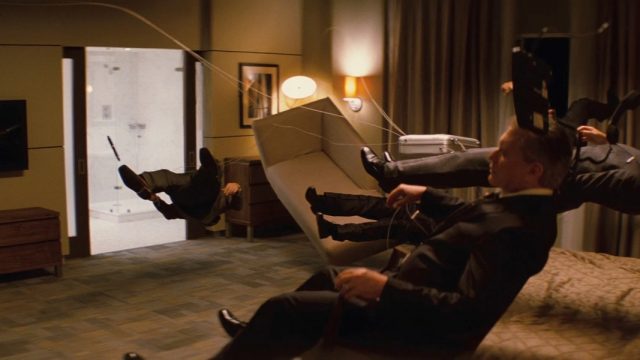When thinking of dreamlike films and filmmakers, I’m guessing the name that comes to most peoples’ minds first is David Lynch. His name has become literally synonymous with dreamlike, a convenient shorthand for describing any movie whose surreal elements evoke the kind of disconnected moments half-remembered from sleep. Lynch’s surrealism is often taken directly from his own dreams, thoughts during meditation, and other contact with his unconscious. Characters act on sudden shifts of emotion, meaningful props reappear at key moments, rooms and costumes bend to the emotional truth of the scene rather than contemporary fashion. The most indelible moments of Lynch capture the emotional logic of a situation regardless of its apparent logic.
But something it doesn’t do is resemble my dreams. I find this true of most surrealism, all the way back to “Un Chien Andalou.” I enjoy the way these films can temporarily shake the rational part of my mind and give me an experience that bypasses logic on the way to understanding. But in my dreams, strange as they can get, rarely do they have a fluidity on the level of Buñel or Lynch.
Inception, from the relentlessly logical mind of Christopher Nolan, finds characters exploring dreamspace according to a strict set of rules. There’s surreal elements, most memorably the streets of Paris folding in on themselves and a hotel that loses its gravity. But these elements appear as the direct result of the characters’ actions and intentions, and the surrealism is a byproduct of the dreaming mind interpreting the new input. Nolan’s most fervent and articulate detractor at the time of the movie’s release, Jim Emerson, pulled no punches in his post “Has Christopher Nolan forgotten how to dream?” He writes “the movie’s concept of dreams as architectural labyrinths – stable and persistent science-fiction action-movie sets that can be blown up with explosives or shaken with earthquake-like tremors, but that are firmly resistant to shifting or morphing into anything else – is mystifying to me.”
On the same site (Emerson was editor of rogerebert.com and posted his blog as part of that site) Roger Ebert listed Inception as one of his top movies of 2010 and discussed his response to its more structured depiction of dreaming:
Do dreams “have” an architecture? Well, they require one for the purposes of this brilliantly visualized movie. For some time now, I’ve noticed that every dream I awaken from involves a variation of me urgently trying to return somewhere by taking a half-remembered way through streets and buildings… In every case, my attempt is to follow an abstract path (turn down here and cut across and come back up) which I could map for you. Inception led me to speculate that my mind, at least, generates architectural pathways, and that one reason I responded to Inception is that, like all movies, it was a waking dream.
The universal activity of dreaming has less-than-universal forms. Despite several common shared dream archetypes (teeth falling out, being unclothed in public, etc) our experience of dreams don’t always line up to the same brand of surrealism. My experience is more in line with Ebert’s in this case – the space and the props remain more or less intact while the rules around them fluctuate. Granted, the rule fluctuations in Inception have lengthy Nolen-esque explanations. But for me this has the effect of immersion in a dream where what rationality I have available can make enough sense of the sudden changes to continue to function in the world, as opposed to straight surrealism which can have a distancing effect where I find myself appreciating the dream craziness from the outside. Inception, naturally, has an ass-covering explanation even for this – only when you wake up (or leave the theater) do you realize not everything made sense.
Spirited Away also does this effectively, creating navigable fantasy spaces and rules that motivate the action and have their own apparent logic, even while that logic falls apart in daylight. Spirited Away also has a personally familiar scene where the protagonist walks down a set of steep, narrow stairs. Her speed picks up with every step until she’s careening dangerously down them with no handrail available. Losing control of speed is a recurring element in many of my dreams. I was shocked to see it recreated almost perfectly in a non-dream driving sequence in Todd Haynes’s Safe, a film with a literal surface that nonetheless contains dreamlike moments.
Your turn, Soluters. What movies best capture the way you dream? Have you come across scenes in movies that were familiar from your dreams?


